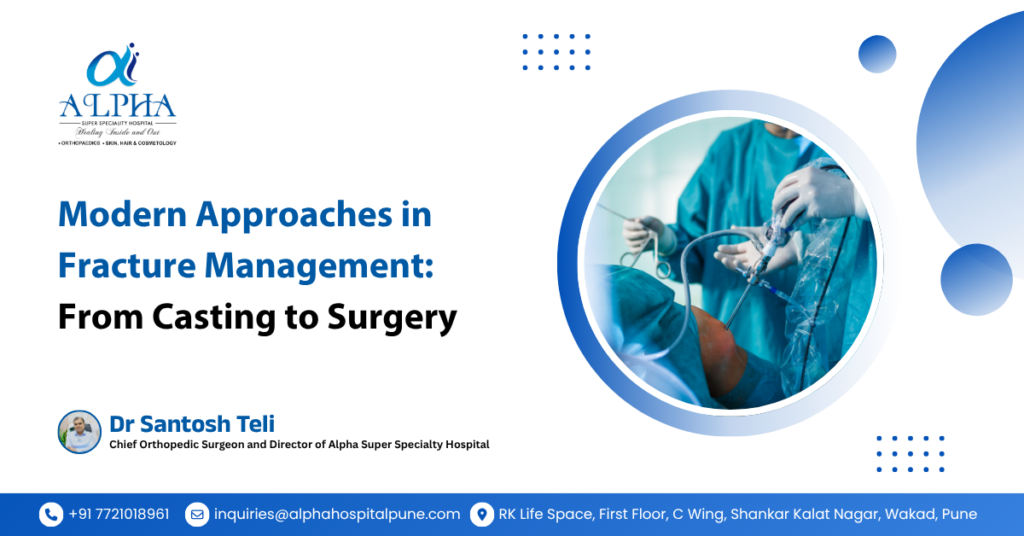Fractures are among the most common orthopedic injuries, affecting people of all ages. Timely and effective fracture management is crucial to ensure proper healing, restore function, and prevent long-term complications. With advances in medical technology, the approaches to treating fractures have evolved significantly, ranging from traditional casting to advanced surgical techniques.
Understanding Fractures
A fracture occurs when a bone breaks due to trauma, falls, accidents, or underlying conditions like osteoporosis. Fractures can be classified into various types, such as:
- Closed fractures – The bone breaks but does not pierce the skin.
- Open (compound) fractures – The bone breaks through the skin, increasing infection risk.
- Stress fractures – Small cracks in the bone caused by repetitive force or overuse.
- Comminuted fractures – Bone shatters into multiple pieces.
- Greenstick fractures – Partial fractures, common in children.
Correct diagnosis through X-rays, CT scans, or MRI is essential for proper treatment planning.
Modern Fracture Management Techniques
1. Casting and Splinting
Traditional methods like plaster casts and splints are still widely used for stable fractures. Modern materials, such as fiberglass and synthetic casts, offer:
- Lightweight alternatives
- Water resistance
- Better comfort and mobility
Casting is ideal for fractures that are properly aligned and stable, allowing the bone to heal naturally over time.
2. Traction Therapy
Traction involves gently pulling the fractured bone to align it properly. While less common today, it is still used in specific cases such as:
- Hip fractures in elderly patients
- Complex lower limb fractures
Modern traction devices are more precise, ensuring better bone alignment and faster recovery.
3. Minimally Invasive Surgery
For fractures that cannot be managed with casting alone, surgical intervention may be necessary. Modern surgical techniques include:
- Internal Fixation: Using plates, screws, or rods to stabilize the bone internally.
- External Fixation: Metal pins or screws placed outside the skin to stabilize complex fractures.
- Intramedullary Nailing: A rod is inserted into the marrow canal of the bone, commonly used in long bone fractures like the femur or tibia.
These approaches reduce healing time, promote early mobility, and minimize complications.
4. Advanced Rehabilitation Techniques
Post-fracture care has evolved beyond immobilization. Modern rehabilitation includes:
- Physiotherapy: Restores strength, mobility, and flexibility.
- Occupational Therapy: Helps patients regain daily activity functionality.
- Pain Management and Nutritional Support: Accelerates recovery and ensures optimal bone health.
When to Seek Immediate Medical Attention
Certain fracture symptoms require urgent orthopedic care:
- Deformity or unnatural positioning of the limb
- Severe pain and swelling
- Open wounds with exposed bone
- Numbness or loss of movement
Early intervention significantly improves healing outcomes and reduces the risk of long-term disability.
Conclusion
Modern fracture management has come a long way, offering patients a wide range of effective treatments from casting to advanced surgical techniques. Under expert care, such as that provided by Dr. Santosh Teli, patients can achieve faster recovery, better bone alignment, and a smoother return to daily activities.
Whether it’s a simple fracture or a complex orthopedic injury, personalized treatment plans and modern technology ensure optimal results.

